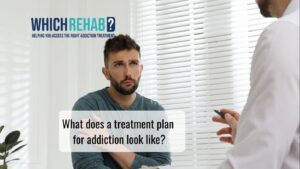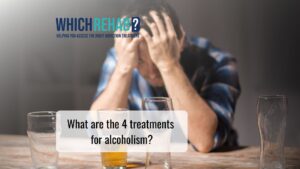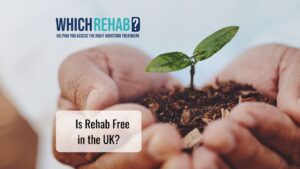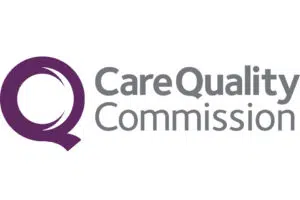Do you know someone that’s fallen foul of Tramadol Addiction? Perhaps you struggle with this prescription painkiller addiction yourself.
It can be hard to know where to turn when you find yourself in the throws of addiction. Fortunately, help is at hand.
Read our in-depth tramadol addiction guide to find out all about this debilitating addiction and how to get the help you or your loved one needs.
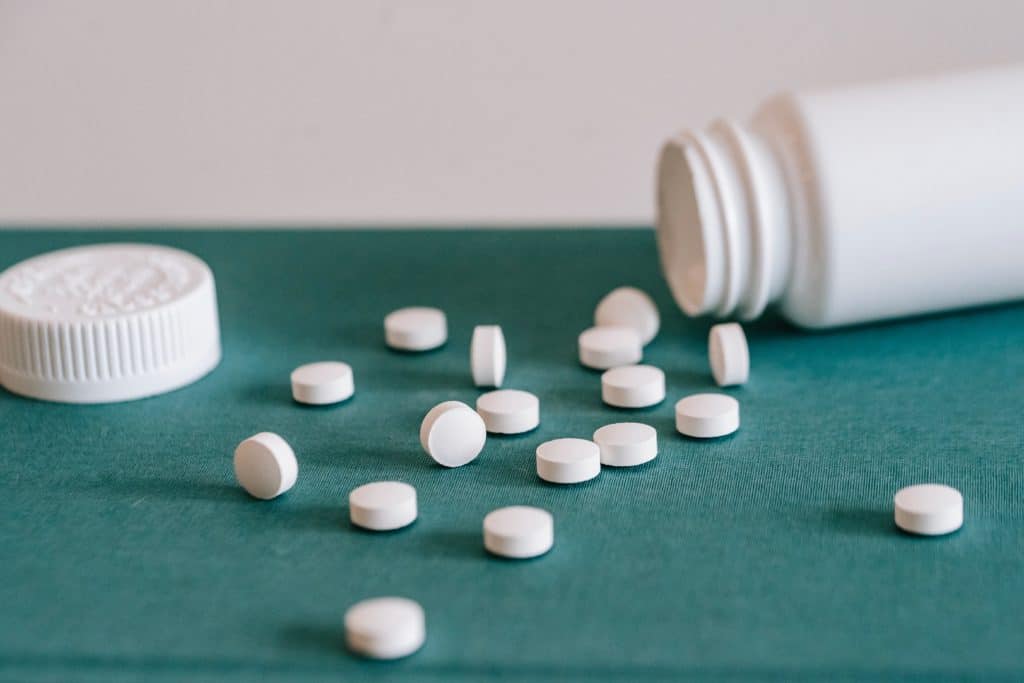
What is Tramadol Addiction?
Tramadol addiction is the term given to the compulsive need to take tramadol outside of its prescribed use.
Tramadol is a synthetic, opioid analgesic medication prescribed to offer pain relief from injury or after surgery. However, while it was designed to be a safer alternative to some other prescription painkillers, tramadol is also sometimes given to people suffering from long-term chronic pain, which, over a period of time, can often lead to tramadol addiction and dependence.
Also referred to by its trade name, Ultram, tramadol is often used to treat moderate pain resulting in many people believing the drug to be less addictive than other opioid drugs, like Fentanyl or Oxycontin, therefore ignoring the potential dangers that come with abusing it. Obtaining and using Tramadol without a prescription or taking more than the prescribed dose are warning signs of Tramadol abuse and, depending on the severity of your addiction, may require intervention to overcome.
Typically found in pill form, those using it recreationally may crush and snort the drug for a more intense hit, however, others choose to combine it with other substances to increase its effects which can be extremely dangerous and, in some cases, fatal.
ARE YOU SUFFERING FROM PREGABALIN ADDICTION?
Our team of rehab and addiction specialists are on hand to talk to you day or night. Let us help you take back control.
Symptoms of Tramadol Addiction
The addictive potential of prescription medications such as tramadol is often overlooked because, most of the time, they are obtained legally and prescribed by health professionals. However, it’s important to understand that prescription drug addiction is still a risk with opioid drugs such as tramadol, even when it is taken as instructed.. While Tramadol is only a tenth as strong as Morphine, it can still be habit-forming and lead to both physical effects and psychological dependence. Once you have built up a tolerance it becomes less effective in relieving symptoms of pain.
It’s not uncommon for symptoms of tramadol addiction to be dismissed as adverse effects of the medication itself, so being aware of the signs of addiction can help you identify a potential problem.
Signs of tramadol addiction include:
- Dilated (small) pupils
- Little to no appetite
- Nausea
- Vomiting
- Slurred speech
- Drowsiness
- Headaches
- Impaired coordination
The risks of overdose with Tramadol
One of the biggest risks of tramadol abuse is the potential to overdose. This can occur as a result of taking a high dose in a short space of time, but also if taken in conjunction with other depressants such as alcohol. Overdose symptoms can be difficult to recognise and if you notice any of the following symptoms after prolonged tramadol use, you should seek medical attention immediately.
- Extreme muscle weakness
- Dizziness
- Shallow breathing
- Slow heartbeat
- Loss of consciousness
- Constricted pupils
- Slow Respiratory distress
- Cold clammy skin
- Blueish tinge to lips and fingernails
How tramadol addiction can affect your life
Addiction is a progressive disease and can have a negative impact on every aspect of your life, from finances, family life and relationships to environment and health. Extensive use of any substance can take a toll on your physical and mental health, but opioids like tramadol can give way to dangerous symptoms such as risk of seizures and central nervous system depression. CNS depression occurs when the central nervous system slows down so much that your heart rate and breathing decreases with it, which could leave you in a coma, or dead.
Serotonin syndrome is another severe side effect of Tramadol abuse that could be fatal if not treated in time. This often occurs when medications are mixed and are common in people who take Tramadol and antidepressants. Serotonin syndrome can occur when too much serotonin is produced by the brain and remains there. When the brain releases serotonin naturally, it is reabsorbed by the cells before neurotransmitters can continue to send messages. However, taking high doses of Tramadol and other medications can lead to a huge surge in levels of serotonin, which cannot be reabsorbed into the brain.
Some of the most common symptoms of serotonin syndrome include:
- Confusion
- Agitation
- Muscle pain
- Rigid muscles
- Tremors
- Lack of coordination
- Seizures
- Coma
- A rapid heart rate
ARE YOU SUFFERING FROM TRAMADOL ADDICTION?
Our team of rehab and addiction specialists are on hand to talk to you day or night. Let us help you take back control.
Tramadol Dependence vs Tramadol Addiction
Addiction to tramadol and tramadol dependence describe two different stages of addiction. While addiction refers to the obsessive and continuous act of obtaining and using tramadol, drug dependence occurs once your body has developed a physical tolerance to the drug. Once physical dependence occurs, most of the effects of tramadol are lost, meaning that more and more of the drug is required to achieve the same high.
Long-term tramadol use, with or without a prescription, will result in your body developing a strong tolerance to tramadol. Lowering the dosage or stopping it completely can lead to unpleasant withdrawal symptoms. This process is a result of the brain attempting to adjust and function normally without tramadol.
Some of the most common withdrawal symptoms of tramadol include, but are not limited to, the following:
- Insomnia
- Runny nose
- Fever
- Stomach cramps
- Muscle aches
- Vomiting
- Tremors
- Sweating
- Seizures
- Panic attacks
The Risks of Tramadol Withdrawal
If you’ve been taking tramadol for a long time and wish to withdraw from it, you should speak to a medical professional about safely tapering your dosage.
The prolonged use of any substance – be it illicit drugs or prescription medication – will have an impact on your natural brain chemistry. When you stop taking Tramadol suddenly your body quickly tries to adjust to its absence. While your brain tries to start producing chemicals on its own, you may experience a range of flu-like symptoms such as sweating, chills, insomnia and an upset stomach as well as feeling irritated and aggravated. You might also experience varying degrees of depression and anxiety.
Tramadol withdrawal symptoms typically begin within one or two days of your last dose and usually subside.
The symptoms of tramadol withdrawal are less intense than those that occur with heroin or fentanyl addiction because tramadol’s effects on the opioid receptors are mild in comparison. This means that it should take much less time for your brain to adjust to its absence.
BREAK FREE FROM ADDICTION
It can feel hopeless falling into the pit of addiction. Don't struggle alone, help is at hand.
Treatment Options for Tramadol Addiction
Many people are unaware of the Tramadol addiction help available to them and taking the first step to seeking help is often the most difficult part of the recovery process. The most common treatment avenue for this type of addiction is a residential rehab facility. However, this option might not be available to everyone, and so many people choose to attend free services provided by some councils and charities.
The best treatment plan for any opioid addiction is a medically assisted detox combined with a research-based therapy program. The purpose of a detox is to rid the system of all the toxins that have built up in the body over time as a result of excessive substance misuse. Once you no longer have Tramadol in your system, you can begin a treatment programme to tackle the psychological aspects of addiction. Addiction counselling and therapy are designed to explore any underlying issues that may have contributed to your addiction.
Once you understand the possible triggers behind your substance misuse, you can substitute other behaviours, reducing the likelihood of relapse and increasing the chances of long term recovery.
Popular Tramadol Addiction Therapies
Popular Tramadol addiction therapies include:
Cognitive Behavioural Therapy
Motivational Interviewing
Family and social therapy
Exercise &
Nutrition
Peer support group participation
FAQs
Most addictions can be identified through the obsessive and compulsive need to find and use drugs despite any negative consequences that might occur as a result of you doing so. If you find yourself trying to obtain Tramadol outside of a medical prescription, taking larger doses, experiencing cravings for tramadol and obsessing about your next dose, or mixing it with other substances to intensify its effects, then you may be suffering from addiction to tramadol.
Heroin is an opiate derived from the poppy plant, much like morphine, while Tramadol is a synthetic opioid similar to codeine. Both heroin and Tramadol share related properties and produce the same effects, and while Tramadol is significantly weaker than heroin, both can be physically and psychologically habit-forming.
When you suddenly stop taking any opioid medication, like tramadol, you may experience unpleasant withdrawal symptoms, such as muscle weakness, as your body tries to adjust without it. It’s during this time that most relapses occur with people turning to tramadol for relief. While tramadol is not considered to be a particularly potent painkiller, continued abuse of this drug can cause a multitude of health issues, both physically and mentally. Although there are various treatment options available for addiction, an inpatient rehab facility is considered to be the most effective when it comes to maintaining sobriety.
Yes, taking large doses of tramadol for a prolonged period increases the possibility of overdose, which can be fatal. Symptoms of a tramadol overdose may include extreme drowsiness, confusion, pinpoint pupils, a slow heart rate, respiratory depression, and unconsciousness. The risk of overdosing on tramadol is far greater, however, when it is mixed with other medications, such as alcohol or antidepressants.
Tramadol brings about an increased sense of wellbeing, feelings of euphoria and pleasure and one of the common signs to look out for is a dramatic shift in mood. These mood-enhancing effects of tramadol are what lead to people abusing it. You may also be able to identify tramadol use in someone you know if they seem to be displaying behavioural symptoms such as lowered inhibitions and engaging in risky behaviours. Obvious signs like these are more noticeable when someone first starts taking tramadol.


